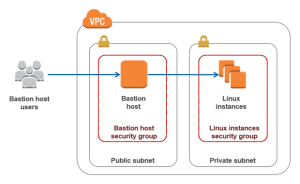Who and when SOLID principles were first introduced?
The SOLID principles were first introduced by Robert C. Martin (also known as “Uncle Bob”) in the early 2000s. Martin is a software engineer, author, and consultant, and has been a prominent figure in the software development community for many years.
The SOLID principles were first described in Martin’s book “Agile Software Development, Principles, Patterns, and Practices,” which was published in 2002. The book outlines a set of practices and principles for developing software in an agile and efficient manner, and the SOLID principles are a key component of this approach.
Since their introduction, the SOLID principles have become widely recognized and adopted in the software development industry as a way to write more maintainable, scalable, and flexible code. They are now considered to be one of the foundational concepts of modern software engineering and are frequently taught in software development courses and training programs.

Details about the SOLID principles.
SOLID principles are a set of five design principles that help software developers create maintainable, scalable, and flexible software. The acronym SOLID stands for Single Responsibility Principle (SRP), Open/Closed Principle (OCP), Liskov Substitution Principle (LSP), Interface Segregation Principle (ISP), and Dependency Inversion Principle (DIP). Let’s take a closer look at each of these principles:
- Single Responsibility Principle (SRP): The SRP states that a class should have only one reason to change, meaning that it should have only one responsibility or job. This principle helps to keep classes focused and cohesive, making them easier to maintain and understand. When a class has multiple responsibilities, changes to one responsibility can have unintended consequences on the others, leading to fragile and hard-to-maintain code.
- Open/Closed Principle (OCP): The OCP states that software entities should be open for extension but closed for modification. This principle encourages developers to write code that can be extended without modifying existing code. This can be achieved by using abstraction and interfaces to separate behavior from implementation details. By following the OCP, developers can create more flexible and maintainable software that can evolve over time without breaking existing functionality.
- Liskov Substitution Principle (LSP): The LSP states that derived classes should be substitutable for their base classes without affecting the correctness of the program. In other words, any class that inherits from a base class should be able to be used in place of that base class without causing errors or unexpected behavior. This principle helps to ensure that code is both correct and flexible, allowing for easy modification and extension.
- Interface Segregation Principle (ISP): The ISP states that clients should not be forced to depend on interfaces they do not use. This principle encourages developers to create smaller and more focused interfaces, rather than large and monolithic ones. This can help to reduce coupling between classes and increase the modularity and testability of the code.
- Dependency Inversion Principle (DIP): The DIP states that high-level modules should not depend on low-level modules; both should depend on abstractions. This principle encourages developers to decouple code and create dependencies on abstractions rather than concrete implementations. This can help to reduce coupling between modules and increase the flexibility and testability of the code.
Overall, the SOLID principles provide a set of guidelines for writing high-quality, maintainable, and scalable software. By following these principles, developers can create software that is more flexible, extensible, and easy to understand and modify over time.
What is the benefit of using solid principles?
There are several benefits of using SOLID principles when developing software. Some of the key benefits include:
- Maintainability: SOLID principles help to create code that is easier to understand, modify, and maintain over time. By following these principles, developers can create software that is less prone to bugs and easier to troubleshoot and fix when problems do arise.
- Scalability: SOLID principles help to create code that is more scalable and flexible, making it easier to add new features and functionality as business needs evolve. This can help to future-proof the code and reduce the need for costly rewrites or major refactoring efforts down the line.
- Testability: SOLID principles help to create code that is easier to test and validate, reducing the risk of errors and ensuring that the code performs as expected in a variety of scenarios. This can help to catch issues earlier in the development process and reduce the cost and complexity of testing and validation efforts.
- Reusability: SOLID principles help to create code that is more modular and reusable, making it easier to leverage existing code in new projects and reducing the need to reinvent the wheel for common functionality. This can help to accelerate development efforts and improve overall efficiency and productivity.
- Collaboration: SOLID principles help to create code that is easier to collaborate on, as it is more consistent, standardized, and understandable. This can help to facilitate teamwork and reduce the risk of misunderstandings or conflicts arising between developers working on different parts of the codebase.
Overall, by following SOLID principles, developers can create software that is more maintainable, scalable, testable, reusable, and collaborative, leading to higher-quality code and more efficient development processes.





